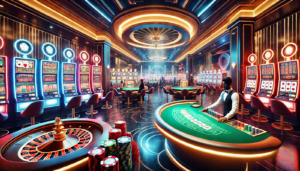The Rise of esports in Modern Culture and Why It Matters

The gaming culture has significantly evolved over the last decade, and it’s no longer just a pastime. Today, eight hours aren’t even long for gaming as streamers can sink in 100+ hours on a game – in one go. Studios are also pouring budgets into long epics such as The Witcher 3, and gamers are having a go at every new AAA game and even niche games.
Of course, this has been fuelled by casual fans who are joining streams in the millions, with well-organised events even creating an extra avenue for online sports betting & odds in Ireland.
But esports is more than just the games, as it has become a new culture for the younger generations and even changed how people interact with digital sports.
No Longer a Niche
Not long ago, esports was just a niche subculture to which only the most dedicated enthusiasts paid attention. There were still tournaments, but these were a bit of an underground thing.
However, that has significantly changed over the last 10 years. Today, Twitch and YouTube streams attract millions of people to watch different streamers complete their quests or compete against others.
Over the last few years, it’s changed from a streaming-only affair as major broadcasters such as ESPN and SkySports have dedicated esports segments. Today, you can even find dedicated esports gaming channels such as GINX eSports TV, and they feature mainstream sponsorship brands like Coca-Cola and Intel.
A Cultural Touchpoint for Gen Z and Beyond
In conventional sports, people who aren’t in the stadium can only tune in and engage in one-way interactions with athletes. esports has changed this, and in the process, attracted many young fans. The industry isn’t just about entertainment but a matter of joining a community with similar interests.
When viewers are watching live streams on YouTube, Twitch, or TikTok, they can interact with the streamers through chat. They can ask questions, take part in real-time polls, and chat with other viewers. Apart from that, there are communities on platforms like Discord where esports fans can interact and get any help they need.
The community nature of the sport makes it a major draw for younger fans as they can follow games, tune in to behind-the-scenes content, and even create their own fan art, memes, and videos.
Rethinking What Makes a Sport a Spectacle
The debate of whether esports qualifies as a “real” sport used to be a hot topic, but it has evolved over time. Today, the lines between traditional sports and esports have become more and more blurry. What was once seen as a niche “form of sport” is now mainstream, with legitimate competitions, its own leagues, regulatory bodies, and even professional teams.
While it doesn’t require physical prowess, esports definitely blends skill and entertainment. Beyond other requirements like teamwork and strategic thinking, it even incorporates mental endurance and focus, making it no less demanding than traditional sports.
Beyond that, esports has become a spectacle in its own right, with production values that rival any top-tier sport. For example, in 2021, Dota 2 had a total prize of $40m, shared between 90 players.
The Future of E-sports Events
As esports has already established itself in mainstream culture, the future is shaping up to be even more exciting. Now, the major shift is in the integration of virtual Reality (AR) and Augmented Reality (AR), which are helping make eSports even more real. Several companies like Meta, Valve, HTC, and Sony have already invested heavily in such gear to help create fully immersive experiences for gamers.
Alongside these technologies, the fanbase is expected to grow even larger with globalisation. And as more people tune in, big companies continue to back more events, keeping the thrill going.





